North Dakota
8 Most Unconventional Towns In North Dakota
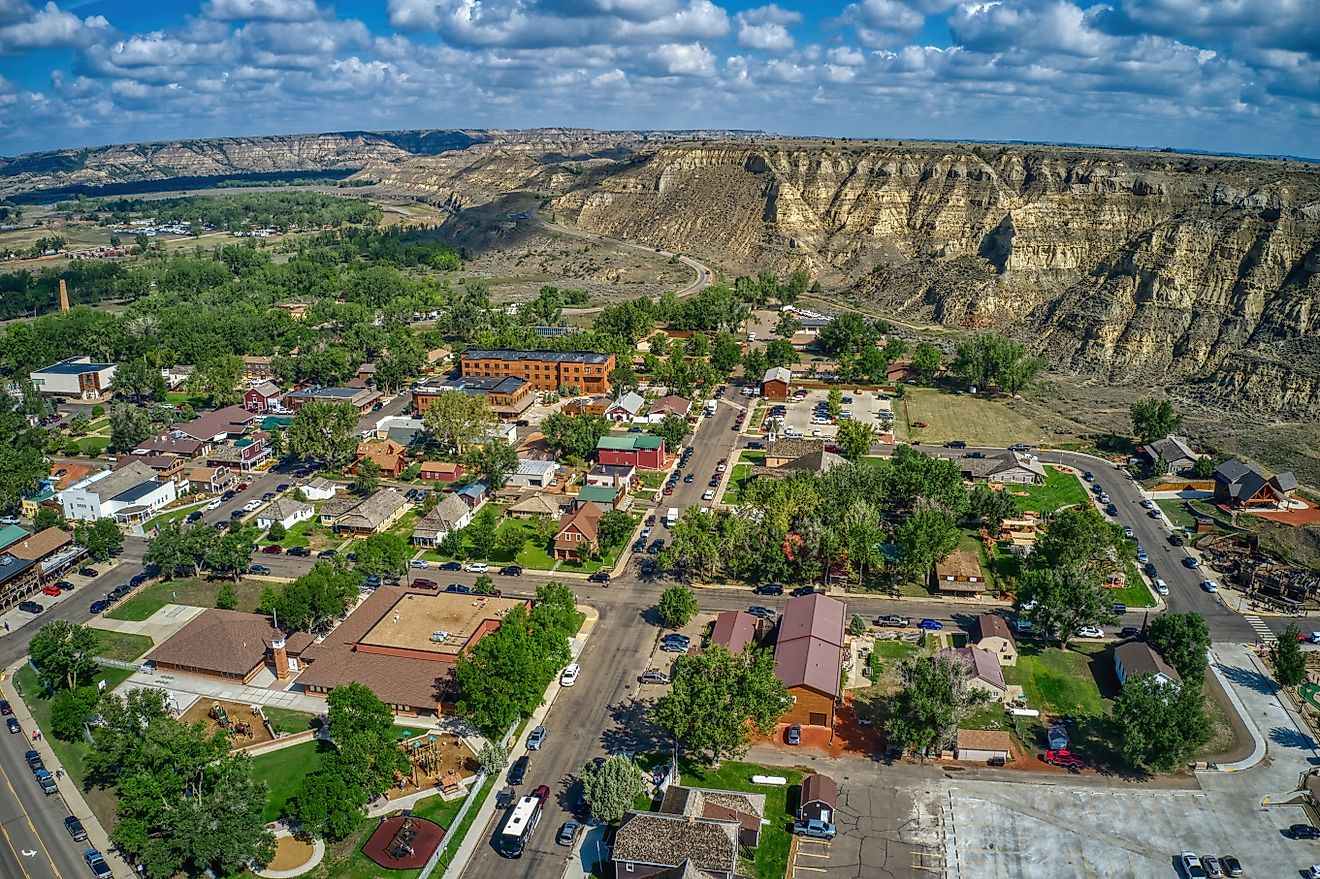
Everyone who has ever visited North Dakota can rightly say that it is one of the friendliest states in the US. After all, the Sioux word “Dakota” means “friend” or “ally,” and even the International Peace Garden right at the US-Canada border encapsulates the friendliness that the state provides. Of course, you will also come across a handful of the most unconventional towns in North Dakota that are both amicable and unusual in their attractions. Whether you are admiring the romance of President Theodore Roosevelt’s life in Medora or taking pictures of animal statues in places like Walhalla, Garrison, or Jamestown, the most unconventional towns in North Dakota will prove to be rather accommodating and exhilarating a destination for newcomers to the state.
Walhalla
Walhalla may be a Norse paradise for slain Viking warriors, but the small town of Walhalla is a heavenly destination on the banks of the Pembina River. The Gingras Trading Post State Historic Site is a popular tourist attraction in Walhalla, as it was once a former trading post from the 1840s that a Metis legislator and businessman named Antoine Blanc Gingras utilized to improve both his business and his community. There is also the Kittson Trading Post, which an agent of the American Fur Company named Norman Kittson handled in 1843. Beyond the quaint historical monuments to Walhalla’s past, you will come across several notable areas of interest for you to explore, such as Pembina Gorge, the Tetrault Woods State Forest, and the Tetrault State Forest Lookout Point. If ever you are interested in spending a longer vacation in Walhalla, then you ought to first book a room in one of the town’s beautiful lodgings, like the Forestwood Inn.
Jamestown
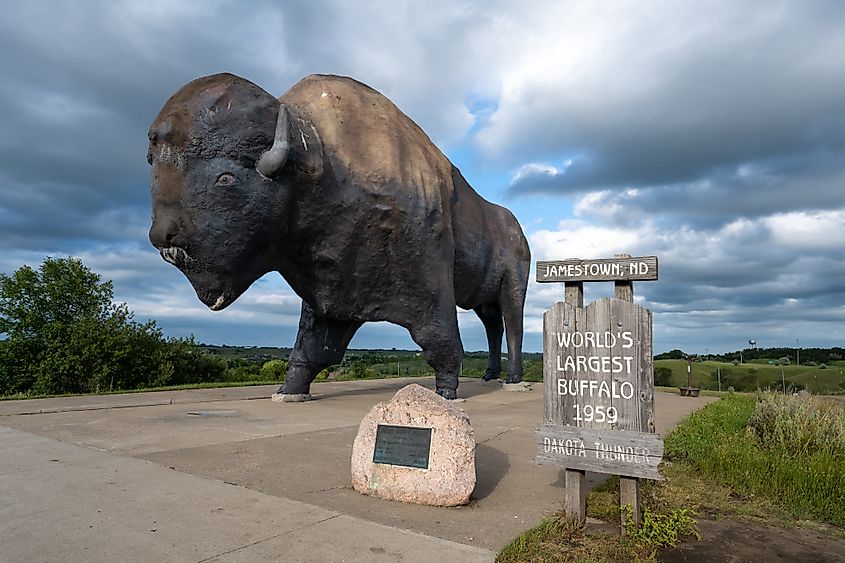
Many will be proud for visiting “The Pride of the Prairie,” the town of Jamestown. Dakota Thunder, a 26-foot-tall buffalo statue, is considered the World’s Largest Buffalo and an immortal guardian and mascot for the thousands of grazing buffalos dominating the James River and Pipestem River as well as the prairies surrounding Jamestown. The National Buffalo aims to protect these majestic herds while also providing informational histories and documents regarding American bison. Every year on the month of June, Jamestown celebrates the beloved Kite Fest where people can send their kites soaring into the sky. Meanwhile, on the next month of July, the James River Rodeo attracts hundreds of newcomers with its festivities and entertainment. Since Jamestown is only midway between the big cities of Bismarck and Fargo, you will find the place a convenient stopover to the many other wonders to find in North Dakota.
Valley City
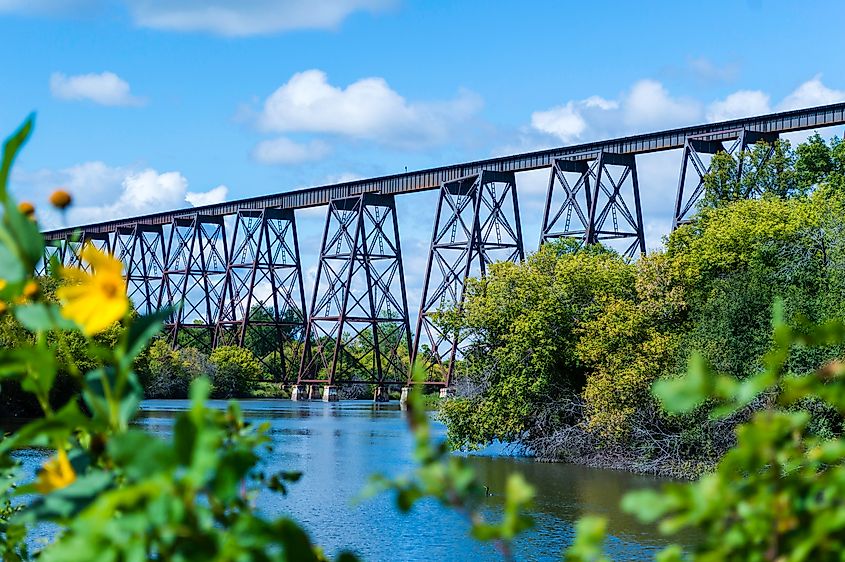
The Sheyenne River Valley shelters the unconventionally beautiful town of Valley City, which is about 60 miles away from the city of Fargo. Gundy the Triceratops, a popular prehistoric mascot, welcomes visitors who are out on an adventure in the Sheyenne River Valley. The Barnes County Museum chronicles Valley City’s contributions to local agriculture in the valley, while the Camp Sheardown State Historic Site and Fort Ransom State Park offers more insight into Valley City’s development. Lake Ashtabula and the Sheyenne River are delightful loci of interest for those enthusiastic for wading about. Then there is the Sheyenne River Valley National Scenic Byway which provides panoramic routes of the Sheyenne River Valley and the surrounding landscapes of Valley City. There are plenty more surprises to discover in Valley City, even in quaint lodgings like the AmericInn, Grand Stay, or Three Oaks Guest Inn.
Bottineau
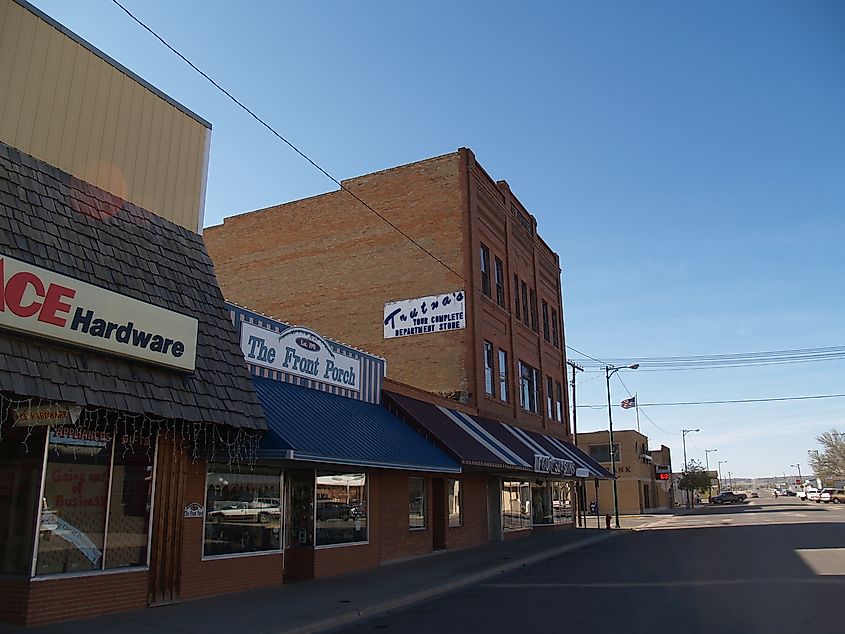
Spring, summer, autumn, winter—these four seasons can all be appreciated in “The Four Season’s Playground” of Bottineau. A plethora of perennial activities can be experienced from foothills of the Turtle Mountains all the way to the border of Canada, among them the Mystical Horizons which are also known as the “Stonehenge of the Prairie” due to the enigmatic arrangement of stones in the place. Lake Metigoshe, Lords Lake National Wildlife Refuge, and Pelican Lake are some of the many outdoor landscapes you can traverse and see dozens of North Dakota’s bodacious wildlife. The Pride Dairy is widely known for being the last small-town creamery in North Dakota, while Tommy the Turtle is a gigantic turtle on a snowmobile which you can take selfies or groupies of at your leisure. Should you ever get exhausted from all the seasonal travels, then keep yourself safe and sound in fine accommodations such as the Turtle Mountain Inn or Cobblestone Inn & Suites.
Devils Lake
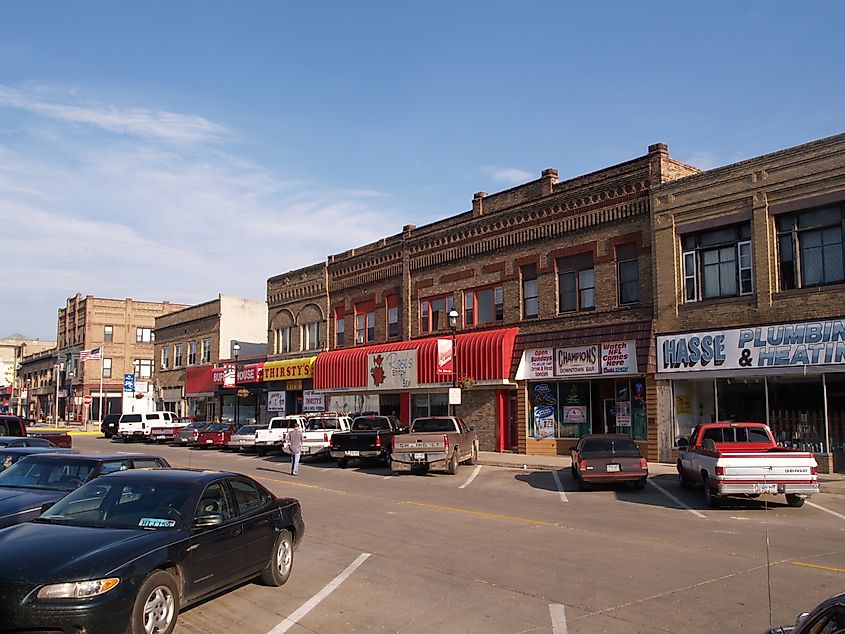
Devils Lake is both a town and a lake just across the Spirit Lake Reservation of North Dakota. It is undoubtedly one of the best destinations to go boating, kayaking, and fishing in the state. Furthermore, the town promotes a handful of scenic trails and treks in places like the Grahams Island State Park, the Devil’s Lake State Park. and the White Horse Hill National Game Preserve where elk and bison graze. Fort Totten is an excellent spot for you to immerse yourself in the history of the Lake Region and in Devil’s Lake specifically. The Lake Region Pioneer Daughter’s Museum, likewise, details much of the pioneer and military expenditures that Devil’s Lake was part of. Aside from Devil’s Lake, you might also fancy strolling the strands of Lake Alice or Dry Lake. In the end, you ought to rest for the evening in either the Devil’s Lake Sportsmans Lodge, Devil’s Lake Inn, or Fort Totten Trail Inn in preparation for a new day of adventure in Devil’s Lake.
Minot
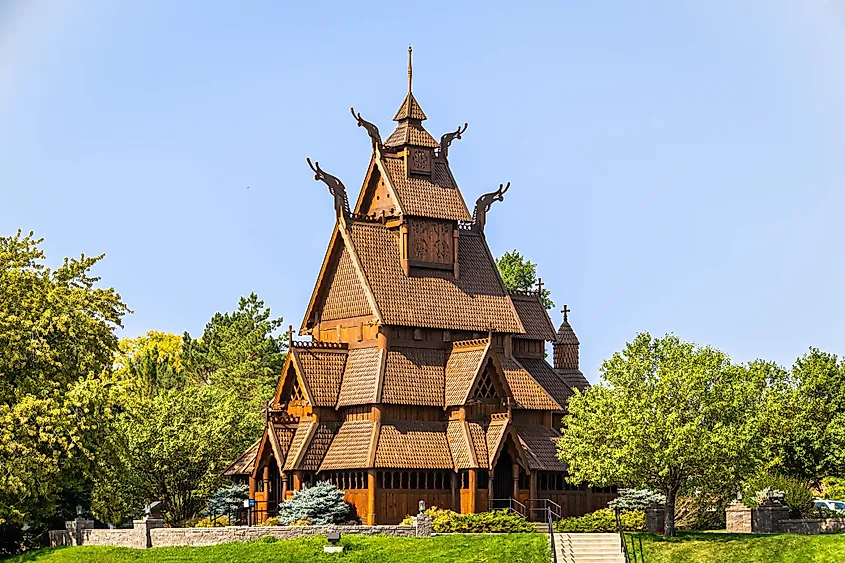
Minot, a small town reminiscent of the Scandinavian countries in Europe, is just an hour away from Devil’s Lake. The Scandinavian Heritage Park contains a number of cultural and historic features from each of the nations of Scandinavia. For example, you will find a windmill similar to those in Denmark, a sauna akin to those in Finland, a stabbur (storehouse) from Norway, and a Dala horse from Sweden. On the other hand, Minot is also home to the Dakota Territory Air Museum where American aircrafts used in World War II are on full display. The Roosevelt Park Zoo is home to many exotic animals, most of whom have been rehabilitated at this very site. Finally, the exquisite lodgings of the Sierra Inn, the Hotel Revel, and Hyatt House will keep you satisfied and comfortable on your vacation in Minot.
Medora
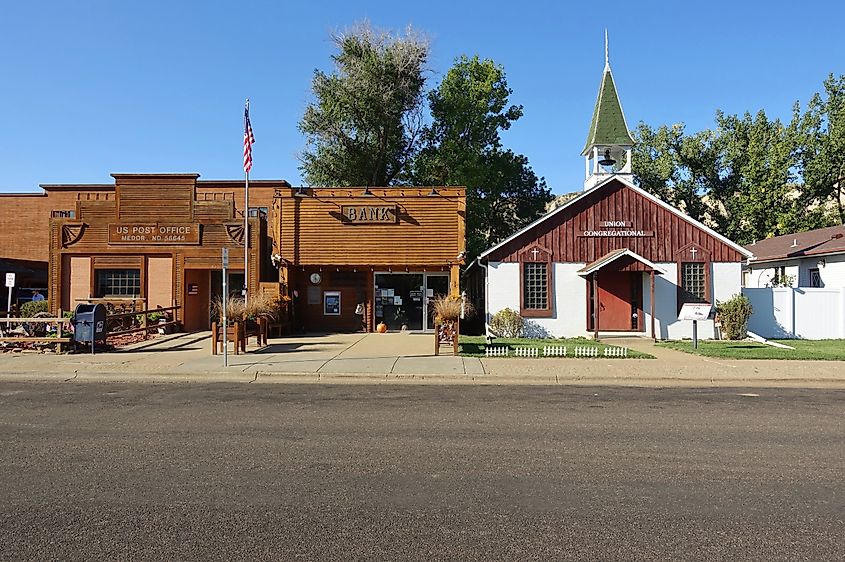
President Theodore Roosevelt was certainly a great man who surmounted many challenges and difficulties in his career. But even a giant of a man needs a little simplicity in his life, and for him he found “the romance of his life” in the small town of Medora. It was beside the Little Missouri River that President Roosevelt raised cattle in the Maltese Cross Cabin, which continues to inform visitors more on Roosevelt’s simplistic lifestyle. The badlands of the Theodore Roosevelt National Park are abundant with wild elk, prairie dogs, and bison which you ought to be mindful of in your wanderings. The Perception House is an unconventional abode designed to create illusions, in stark contrast with the Von Hoffman House which offers a clear and precise illustration of how Medora became a prosperous small town beside the Little Missouri River. For those of you curious to see Roosevelt’s romance of his life, you should first book a room in places such as the Rough Riders Hotel, Hyde House, or Wooly Boys Inn for a merrier stay in Medora.
Garrison
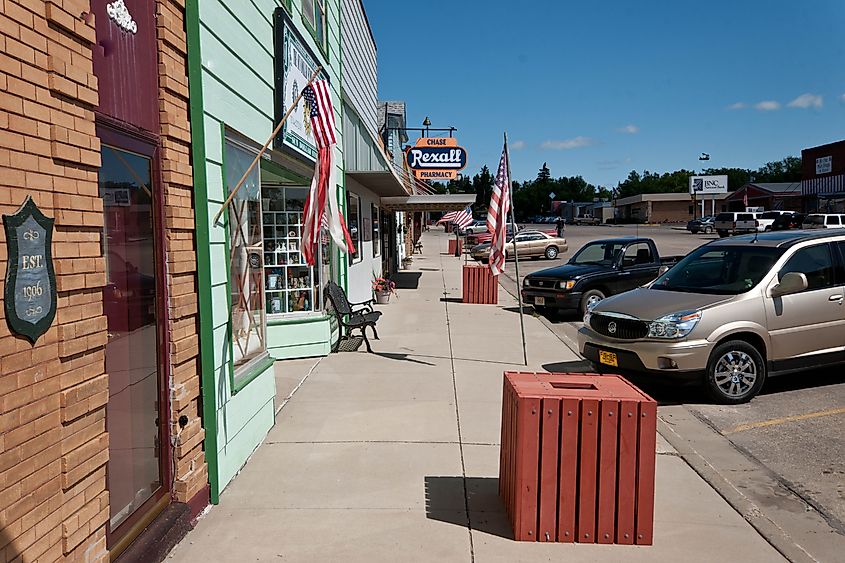
Garrison, located at the northern strands of Lake Sakakawea, is lauded for being “The Walleye Capitol of the World” due to its abundance of walleye fish in the area. Only about 47 minutes from Minot, visitors to the Walleye Capitol of the World can admire a statue of a walleye fish called Wally the Walleye that represents the bountiful and prosperous fishing community in Garrison. Lake Sakakawea and Lake Audubon are two excellent spots for you to go fishing for walleye and other fish species around Garrison.
In the past, the town was known for being a coal-mining center, which the Custer Mine Interpretive Site elaborates, specifically on the nearby Truax-Taer Mine, which you can explore. Additionally, you can go exploring the Heritage Park & Museum as well as a 1905 train depot for more insights into Garrison’s past. As the town’s name implies, there is also a bit of military history for you to see in the Fort Stevenson Guardhouse. Last but not least, the North Shore Inn & Suites and Garrison Motel are two examples of excellent lodgings you can find in Garrison.
Almost 90% of all of the United States’ honey comes from North Dakota. As such, you might come across vast hectares of honeybee hives and farms in the most unconventional towns in North Dakota. There are plenty of fishes to find in Garrison, buffalos to admire in Walhalla, and even a statue of a giant turtle riding a car in Bottineau. Most importantly, there are unique cultures and etiquettes to admire in Nordic-themed towns like Minot and resplendent communities such as Devil’s Lake and Valley City. Travelers from far and wide will all feel as welcome as friends in the friendliest state in the US.

North Dakota
AmeriCorps cuts hit rural North Dakota schools, communities

BISMARCK — Bryon Rosene is in his ninth year as a paraprofessional in the Elgin-New Leipzig Public School system, and was, until recently, an AmeriCorps participant.
Sweeping cuts of around $400 million in grants by the Trump administration’s Department of Government Efficiency on April 25 ended Rosene’s work and that of dozens of other AmeriCorps members across the state.
AmeriCorps participants in North Dakota primarily worked in schools, child care and community- capacity building in rural parts of the state where recruiting extra assistance can prove challenging.
Besides his regular duties, being part of AmeriCorps allowed Rosene to work closely with 10 of the school’s seventh and eighth-grade students. This is done during a structured period outside normal class time dedicated to improving math scores that had slipped following the pandemic.
While that number may not sound like a lot, for a school with only 160 students from K-12, Rosene said was able to serve a significant portion that needed extra help through his AmeriCorps participation.
“There’s an absolute improvement, the quality of work, the quality of thinking,” Rosene said.
“Everything with it has been beneficial to them.”
Rosene was somewhat skeptical about joining the AmeriCorps program initially, he said, but saw how well it worked after becoming involved.
“Some federal programs get thrown out there and don’t stand up to the test of time, but this one, it stands up, and it has the data to prove it,” Rosene said. “The program works, and it’s kind of a shame to see it cut.”
AmeriCorps was formed under the National and Community Service Trust Act of 1993, but has roots in similar federal programs spanning back to President Franklin D. Roosevelt’s Civilian Conservation Corps of 1933.
Its direct forerunner was the Volunteers in Service of America program that sprang from the Economic Opportunity Act of 1964.
Participants are often students or recent graduates and qualify for awards to cover education costs, loans or student loan deferments, the latter of which Rosene was able to take. Older volunteers get stipends and supplemental health insurance, or apply educational savings costs to younger family members.
Elgin-New Leipzig Public School superintendent Sherlock Hirning said the school system had three paraprofessionals who participated in the AmeriCorps program who won’t be able to continue providing those services outside of their regular employment.
One was focused on K-3 reading, another on K-6 math, and Rosene who worked with older middle school kids on math.
Three North Dakota programs receiving federal grants in the state were affected, including the South East Education Cooperative (SEEC), Cooperstown Community Activities Authority (CCAA) and the Souris Basin Planning Council (SBPC), which had two grants.
Grant terminations impacted 84 slots for AmeriCorps participants facilitated by the state’s Department of Commerce and the state service commission, Serve ND. Another nine slots were cut under an SBPC program directly paid out by the federal AmeriCorps Agency.
While the total grant amount was expected to be around $432,000 for all the programs cut, some did not use all the funding.
For example, the North Dakota Professional Corps that Rosene took part in was allotted over $24,000 for 40 participants.
This program ended up only recruiting 11 paraprofessionals at rural schools across the state and costing an estimated $7,000 in grant funding total, said Kerri Whipple, director of literary services at SEEC.
Direct AmeriCorps Agency funding for 187 other participants across the state is not currently impacted. This includes another SEEC Reading and Math Corps group, and programs operated by Strengthen ND and Jamestown Parks and Recreation.
Other than some of the minimal material costs covered by AmeriCorps, the salaries of the paraprofessionals were already being covered by the Elgin-New Leipzig school district, Hirning said.
“They kept the one that’s costing them money and cut the one that doesn’t cost them any money that the district is already paying for,” Hirning said. “Now how is that in the vein of saving the billions of dollars they claim they’re saving by doing this whole thing across the country make any sense?”
Whipple was also confused by the cuts.
“The one that is most cost-effective is the one they cut,” Whipple said, echoing Superintendent Hirning. “There doesn’t seem to be any rhyme or reason to who got cut, who got cut partially,
who got cut completely, who was left alone.”
The SEEC program that was cut and that Rosene participated in was especially important for small rural communities, Whipple said. It allowed schools to already use hired staff at the school instead of trying to tap into a limited pool of candidates available in many communities.
“There’s not a lot of people sitting around hoping for volunteer opportunities that aren’t already engaged somewhere,” Whipple said of the situation in smaller towns.
The cuts are particularly devastating to the community of Cooperstown, where the CCAA lost six AmeriCorps participants as well as the ability to work with a pool of dozens of other AmeriCorp-leveraged volunteers in the community.
The AmeriCorps members the CCAA facilitated served in after-school programs, in a community daycare, and at a community gym program.
For these positions under the Kidz Count AmeriCorps Program, federal funding covered around two-thirds of the cost, with local funding picking up the rest.
“We’ve been able to get these programs to run because no one has the funding to have these
services themselves,” said Michelle Zaun, who ran the Kidz Count program.
“The daycares that my members worked in with younger children who are developmentally behind, who are socially behind, no one can pay for the services themselves,” Zaun said. “Our community is small, there’s not enough funding to provide these services.”
CCAA had slots for 10 participants and had been looking to bring on more, but finding people is a challenge as is making sure they pass background checks, Zaun said.
The other organization impacted, Souris Basin Planning Council, had two grants canceled. One grant came directly from the federal government and the other federal grant was facilitated by the Department of Commerce and Serve ND.
In a statement, SBPC’s executive director Briselda Hernandez said the organization was “deeply troubled by the abrupt notice” of the funding cuts.
The SBPC lost grants for over $263,000 to cover 33 AmeriCorps participant slots.
Hernandez stated that SBPC supported nonprofit and community capacity-building efforts statewide by deploying AmeriCorps participants. Briselda got her start after college as an AmeriCorps VISTA participant herself.
“That year of service deepened my commitment to public service, inspiring me to pursue a master’s in public administration and dedicate my career to economic and community development in North Dakota,” Briselda said.
The future of other AmeriCorps programs is also uncertain.
A reported 75% of AmeriCorps Agency staff were placed on leave in the late April efficiency orders, leading some to believe deeper cuts are coming.
“We typically know about next year in March or April, and we haven’t heard anything,” Whipple said about the continuation of other programs past this year.
The North Dakota News Cooperative is a non-profit news organization providing reliable and independent reporting on issues and events that impact the lives of North Dakotans. The organization increases the public’s access to quality journalism and advances news literacy across the state. For more information about NDNC or to make a charitable contribution, please
visit newscoopnd.org.
North Dakota
60 Fires reported across North Dakota over the weekend during Red Flag Warnings
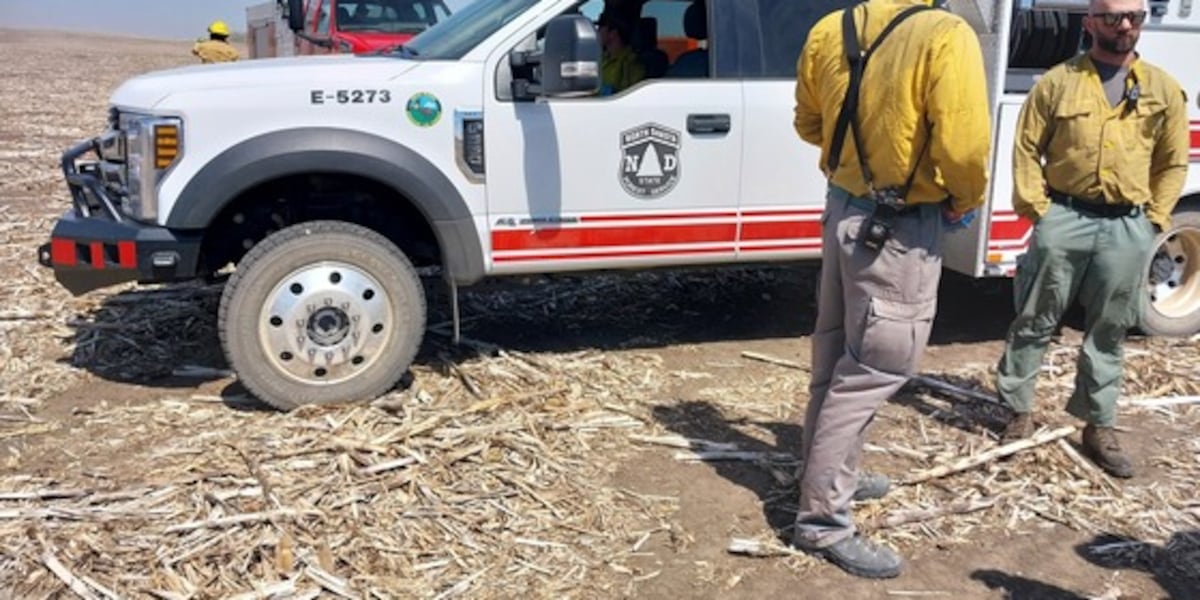
FARGO, N.D. (Valley News Live) – The North Dakota Department of Emergency Services is reporting that crews responded to 60 fire starts over the weekend as the hot and windy conditions continue across the state.
Sunday alone saw the North Dakota Watch Center notified of 20 fires in 15 counties.
In total, over 1,100 acres of land burned over the weekend, in addition to the burning in the ongoing Turtle Mountain fire complex. Some significant fires include a 500 acre blaze Northeast of Glen Ullin, a field fire Northeast of McClusky that burned one tractor and 125 acres, and a fire southwest of Sherwood that burned an outbuilding.
Two grassfires broke out in the ongoing fire complex in the Turtle Mountain area. The total acreage estimate remains at 3,600 acres, is still active, and is anticipated to be a long-lived event.
Several fire crews have been staged throughout the state to respond to these fires and help local crews, including the North Dakota Wildland Taskforce, North Dakota Forest Service, and a team from Colorado.
Copyright 2025 KVLY. All rights reserved.
North Dakota
2 measles cases reported in Cass County

FARGO — The North Dakota Health and Human Services Department said two measles cases have been reported in Cass County, the first to be recorded in eastern North Dakota.
Human services said both cases are unvaccinated individuals who contracted the disease through international travel. One of them is hospitalized.
The health and human services department said members of the public who were at two Essentia Health locations in West Fargo and Fargo may have been exposed. Exposure may have occurred at the Essentia Health Clinic, 3150 Sheyenne St., Ste. 240, West Fargo, between 2:30 and 6 p.m. on Wednesday, May 7, or between 5:30 and 6 p.m., Friday, May 9, at the Essentia Health Walk-in Care, 52nd Avenue, 4110 51st Ave. S, Fargo.
The two new cases bring the total cases reported in the state to 11. The Cass County cases are not believed to be related to the nine cases recently reported near Williston, in Williams County.
The first case was reported Friday,
May 2, when the North Dakota Department of Health and Human Services said an unvaccinated child from Williams County contracted the virus, likely during an out-of-state visit. The number jumped to nine by Friday, May 9. Four of the individuals were contagious while inside three different Williston schools.
Individuals who have not received a dose of the measles, mumps, rubella (MMR) vaccine should quarantine, or stay home, and monitor for symptoms for 21 days.
Those who have been exposed but are vaccinated do not need to quarantine. However, the department of health and human services said they should still monitor for symptoms for 21 days after exposure.
Measles is a highly contagious, viral illness that can be fatal, particularly for young children and those with compromised immune systems. Measles spreads through the air and can remain in a room and on surfaces for up to two hours, sometimes even traveling between floors through ventilation systems.
Measles symptoms often include a fever, cough, runny nose or eye irritation followed by a body-wide rash. Measles spreads easily through the air and remains contagious for several days before and after symptoms appear.
There is no specific medical treatment for measles, though antibiotics may be used in cases with a developed secondary bacterial infection.
According to the state health department, most North Dakotans are vaccinated against measles, and the risk to the general public is low. People who were vaccinated as children and adults born before 1957 are considered protected due to previous infection.
“The MMR vaccine is 93% effective after one dose and 97% effective after two doses,” Molly Howell, state immunization director, said in a statement. “People who are vaccinated and exposed to measles are not likely to develop the disease. MMR vaccination is critical to preventing the spread of measles in the community.”
The MMR vaccine is recommended starting at 12 to 15 months of age, with a second dose at 4 to 6 years of age. Children who have already received two post-12-month doses of MMR are considered fully vaccinated.
For information about measles, vaccination, or local clinic availability, contact the HHS Immunization Unit at 701-328-2378 or 711 (TTY), or visit hhs.nd.gov/measles.
Our newsroom occasionally reports stories under a byline of “staff.” Often, the “staff” byline is used when rewriting basic news briefs that originate from official sources, such as a city press release about a road closure, and which require little or no reporting. At times, this byline is used when a news story includes numerous authors or when the story is formed by aggregating previously reported news from various sources. If outside sources are used, it is noted within the story.
-

 Austin, TX3 days ago
Austin, TX3 days agoBest Austin Salads – 15 Food Places For Good Greens!
-

 Education1 week ago
Education1 week agoIn Alabama Commencement Speech, Trump Mixes In the Political
-

 Technology1 week ago
Technology1 week agoBe careful what you read about an Elden Ring movie
-

 Culture1 week ago
Culture1 week agoPulitzer Prizes 2025: A Guide to the Winning Books and Finalists
-

 Politics1 week ago
Politics1 week agoEPA chief Zeldin announces overhauls to bring agency back to Reagan-level staffing
-

 Education1 week ago
Education1 week agoUniversity of Michigan President, Santa Ono, Set to Lead University of Florida
-

 World5 days ago
World5 days agoThe Take: Can India and Pakistan avoid a fourth war over Kashmir?
-

 Technology5 days ago
Technology5 days agoNetflix is removing Black Mirror: Bandersnatch




.jpg)









